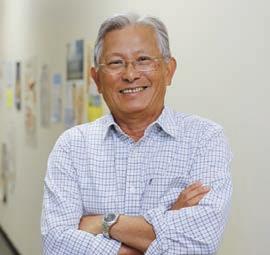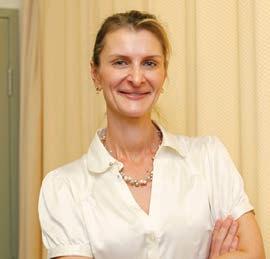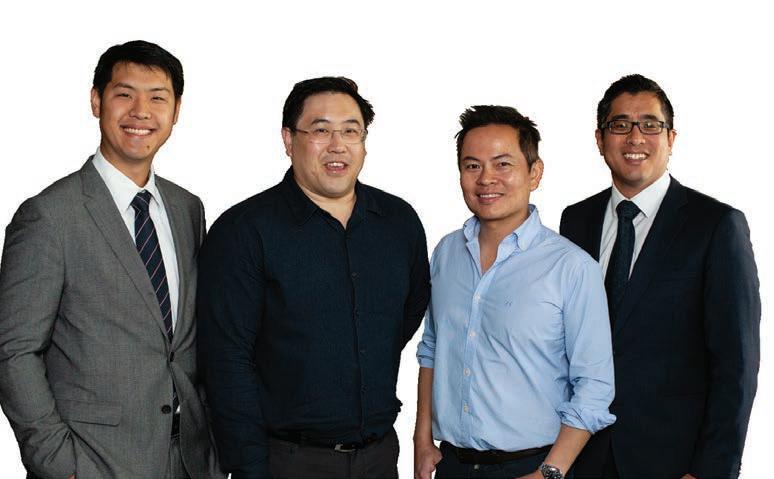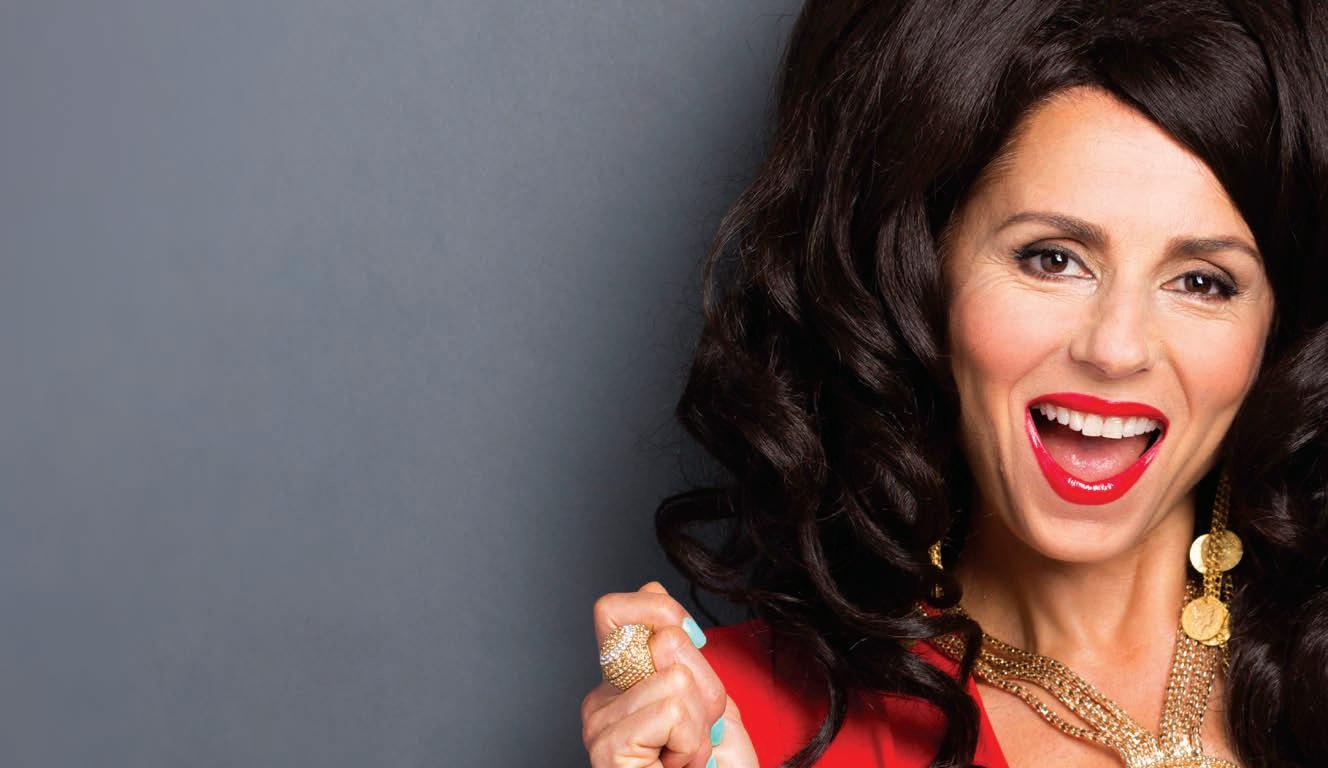
7 minute read
Q&A: Cardiologist Dr Tony Mylius
Q&A with...
Dr Tony Mylius, Cardiologist and Consultant Physician, Northam
MF: Medicine has taken you on an amazing journey. What has guided these decisions?
TM: I moved to Perth from Adelaide in 2003 when Sue and I married and I decided it was better for me to move here than drag her all the way over there and dislocate her from her family. Joining Western Cardiology at the time gave me the opportunity to establish practices in Applecross as well as St John of God Subiaco, and Sue and I established clinics in Mandurah, Rockingham and Northam – where Brian Lloyd had previously provided services for many years before his retirement.
I grew up in Papua New Guinea until I was 16, and then our family moved to Adelaide where I trained at Flinders University and Flinders Medical Centre, before working in New Zealand for four years in the early 1990s. I returned to Adelaide and set up practice in the Fleurieu Peninsula south of Adelaide. So, I have always had a focus on regional practice and have enjoyed the (semi-) rural lifestyle. Getting to know patients, and to be part of the community adds to the rewards of medical practice. Working with my wife, Sue, also adds to our enjoyment of life in the country!
MF: What have you learnt about the art of medicine along the way?
TM: I think the benefits and rewards of the personal interaction to maximise patient health outcomes, personal ‘health status’ and wellbeing are often under-valued in these days of focus on ‘digital health’, procedural medicine and ‘fast medicine’. While we need to continue to develop ways of effectively distributing care, we should not lose sight of the value and benefits of inter-personal connections in the therapeutic relationship with our patients in achieving improved health outcomes.
18 | APRIL 2020 My experience in medical practice has led me to a passion to improve health system performance and health service delivery. Often it is not that we (as a health system) don’t know what to do, but that we ‘don’t do it’. My role as Clinical Co-Lead of the Cardiovascular Health Network and as a senator in the Clinical Senate, allows me to work across the system with a view to addressing these issues.
MF: What drew you, as a young doctor, to cardiology? TM: Opportunity was the main determinant in completing cardiology advanced training in combination with general medicine at a time when ‘dual training’ was more usual. The synergies of combining my passion for clinical medicine and rural/regional practice influenced my decisions not to continue with procedural cardiology, which freed me from the constraints of being tied to a procedural facility, and made it possible for me to focus on enhancing regional service provision and clinical cardiology service provision.
Regional medicine often requires clinicians to take a broader, more comprehensive view on patient care. While patients need access to sub-specialist interventional and procedural services, they first need access to appropriate clinical care, diagnosis, investigation and facilitated access to appropriate procedural or sub-specialist management but with ongoing ‘holistic’ care.
MF: In the 30 years of heart work, what have been the defining moments for you? TM: It sounds obvious now, but establishment and reinforcement of evidence-based secondary prevention in ischaemic heart disease after the travails of debate around statins in the 1970s has been a major milestone in cardiological practice. Continuing research reinforcing the role of clinical cardiological management to reduce recurrent events and mortality has been critical. With our frequent focus on interventional care, we need to maintain our efforts to improve health service performance around non-procedural management.
Percutaneous coronary interventions, improved technology and procedures, minimally invasive surgical coronary and valvular interventions, as well as electrophysiological diagnostic and therapeutic procedures have revolutionised cardiology outcomes – and patient wellbeing.
But, again, often the problem is not that we don’t have effective treatments, it’s that patients don’t get access to those procedures.
MF: What drew you from the city?
TM: In 2010, after Sue and I had provided visiting services to Northam from 2003, an opportunity came to take on the Regional Medical Director role in WACHS Wheatbelt. which prompted us to make the move to Northam full-time. Working in part-time private practice until I finished in the Medical Director role in 2013, I moved into full-time clinical practice in Northam in 2010. Clinical consulting, non-invasive testing service provision and visiting specialist services have developed in our rooms in Northam.
Providing clinical consulting services and visiting specialist services to Northam Hospital, I had thought I would need to work between Northam and Perth, but we became busier and servicing around 50,000 people in the Wheatbelt meant that I have been occupied full-time in Northam.
Providing Aboriginal Cardiology services to Northam, Merredin, Narrogin and Moora has also been a rewarding challenge. The burden of disease is significant and the need for enhanced access to consultant specialist clinical and treatment services provides challenges and opportunities. MF: What impact has increased regional investment had on local communities?
TM: The major investment of Royalties for Regions dollars into the Wheatbelt (as part of the broader SIHI program) has resulted in significant changes in infrastructure with a range of new buildings, renovations and facilities developed. These investments have provided continuing opportunity to enhance clinical service provision. In order to achieve this, it is vital that we continue to recognise that one agency alone cannot address all the health needs in the region and that collaborative efforts are essential to maximise health service provision.
As a community-based specialist providing rooms-based consulting as well as visiting services to Northam Hospital, and remote advice to other hospitals and practitioners when asked, it is critical we don’t lose sight of the need to address the challenges of engaging practitioners and service providers across siloes.
Emergency services were identified as being a major concern for communities and the development of enhanced emergency care through infrastructure investment, the Emergency Telehealth Service and increased medical staffing have had significant benefits in addressing these needs.
MF: Attracting doctors – GPs and specialists – to rural practice remains a challenge. What are your views on training pathways?
TM: Rural and regional practice offers great professional and personal opportunities for challenge, reward and satisfaction. It is important that we recognise the need for families to be supported in access to schools, lifestyle, personal, child and family supports in the regions. Innovative thinking around how we can enhance these personal and professional support networks exists and continue to be developed. We do need to think outside the square and allow some flexibility so that rural practice doesn’t become an either/or decision. Perhaps instead of incentive payments for doctors to move, funds could be used to support spousal and family travel between the city and the country; rethink full and parttime roles. We need to keep focused on enhancing and maintaining the rural community’s access to medical services, how we do that shouldn’t be set in stone.
A range of organisations are actively engaged in these arenas – and crosssystem collaboration is critical to the success of the opportunities. MF: How has your rural experience changed the way you practice medicine? TM: Rural practice and life rewards both my wife, Sue, and me. Our work together enhances the service we provide professionally and personally. Enjoying life and achieving personal and professional satisfaction are rewards which are not available to everyone – and are greatly valued by us.
In receiving the honour of Member of the Order of Australia this year, I have been humbled and gratified with the regard, which this conveys, of patients as well as colleagues and the broader regional community. It has been especially gratifying to receive the award because my mother received an MBE for her work in Community Development in PNG in the 1970s and my grandfather received an MBE for his work as a general practitioner and in medical professional contributions in Melbourne in the 50s.
In addition, my father was a doctor and health administrator in PNG, initially in clinical practice, then in the medical faculty of the University of PNG and the Health Department before moving to Adelaide and being involved in the early days of Divisions of General Practice and GP training programs in the late 1970s and 1980s.
So, obviously my life decisions and directions have been influenced by my experiences and vice versa. My suggestion for anyone contemplating spending time in rural and regional areas is, have a go and enjoy the ride!
Noranda Medical Centre
VR GPs required | busy, mixed billing centre

• Join a dynamic team of Doctors • Full time and part time positions available • Personalised contracts • Excellent treatment room nurse support • Marketing and Best Practice/IT support • Large and modern practice












